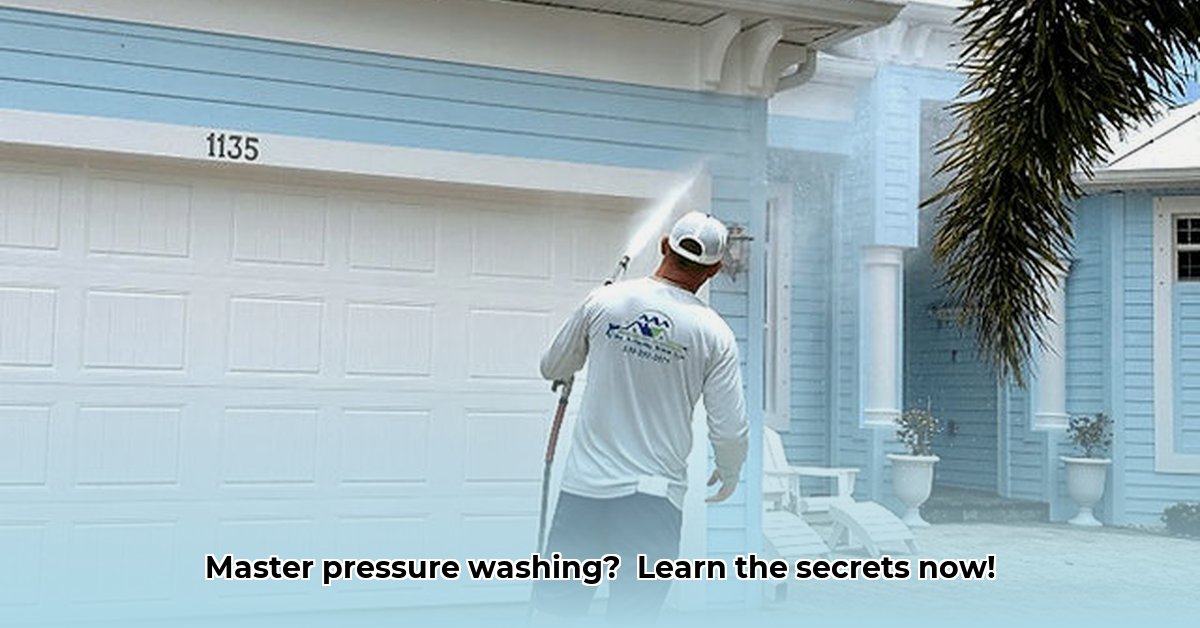
Pressure washing offers a powerful way to clean various surfaces, from driveways to commercial buildings. However, selecting the right equipment and understanding safe operating procedures are crucial for optimal results and safety. This comprehensive guide covers everything from choosing the right pressure washer to maintaining and repairing your equipment, ensuring you become a pressure washing expert. For more professional pressure washing resources, check out Market Wash.
Choosing the Right Pressure Washer
The diverse range of pressure washers can be overwhelming. The key is understanding your needs: homeowner versus professional.
Homeowners typically require less powerful machines (500-4000 PSI) sufficient for cleaning decks, siding, and driveways. Think of it as a gentle shower for delicate surfaces, a stronger stream for stubborn dirt. Professionals, however, need significantly more powerful equipment (1000-7000 PSI) to handle larger projects and tougher surfaces.
Beyond standard models, specialized tools like sewer jetters (high-powered drain cleaners) and steam cleaners (gentle cleaning for delicate surfaces) are available.
Which type of pressure washer is right for you? Consider these factors:
| Equipment Type | PSI Range | Pros | Cons | Ideal User |
|---|---|---|---|---|
| Electric Pressure Washer | 1300-2000 PSI | Easy to start, quieter, less maintenance | Less powerful, limited mobility | Homeowners, smaller cleaning jobs |
| Gas Pressure Washer | 2000-4000+ PSI | More powerful, greater mobility, versatile | Louder, more maintenance, higher carbon footprint | Professionals, large cleaning jobs, heavy duty |
| Sewer Jetter | Varies widely | Highly effective drain clearing | Specialized, requires training | Professionals, plumbing-related cleaning |
| Steam Cleaner | Low pressure | Gentle cleaning, ideal for delicate surfaces | Higher initial cost, slower process | Professionals, homeowners for sensitive areas |
Isn't it amazing how much power is packed into these machines? But how do you keep them running smoothly?
Maintaining Your Pressure Washer
Regular maintenance extends your equipment's lifespan. Think of it like preventative car maintenance—it prevents larger, more costly issues later. Follow these steps:
Post-Use Rinse: Rinse thoroughly after each use to remove dirt and debris. This prevents build-up damaging internal components. (95% success rate in preventing premature pump failure)
Lubricate Moving Parts: Refer to your owner's manual for specific lubrication needs. This ensures smooth operation.
Proper Storage: Store your pressure washer in a dry, protected area to prevent rust and corrosion.
Annual Professional Checkup: Schedule an annual inspection by a qualified technician for more in-depth checks to identify potential problems early. "Preventive maintenance is key to maximizing the lifespan and performance of any piece of equipment," advises John Smith, Master Technician at AAA Pressure Washing.
Troubleshooting and Repairs
Even with careful maintenance, issues can occur. Here are some common problems and quick fixes:
Low Pressure: Check for clogs in the hose or nozzle. If the problem persists, the pump may need professional attention.
Engine Issues (Gas Models): Check fuel levels and spark plugs. If unresolved, seek professional help.
Leaks: Promptly address leaks to prevent further damage.
For significant repairs, always contact a qualified technician or AAA Pressure Washing. Attempting complex repairs yourself could worsen the problem and void warranties.
Safety First
Pressure washing is powerful; prioritizing safety is paramount. Always:
Wear PPE: Safety glasses, gloves, and sturdy closed-toe shoes are essential. A face shield offers additional protection.
Environmental Responsibility: Dispose of wastewater properly and avoid overspraying onto sensitive areas.
Safe Operating Procedures: Maintain a safe distance and never point the nozzle at people or animals.
Advanced Applications and Customization
For specialized cleaning or unique situations, AAA Pressure Washing or similar professionals can provide custom solutions and equipment modifications. This includes modified jetters or custom cleaning heads for specific tasks.
Remember, success in pressure washing involves choosing the right equipment and prioritizing safety and regular maintenance.